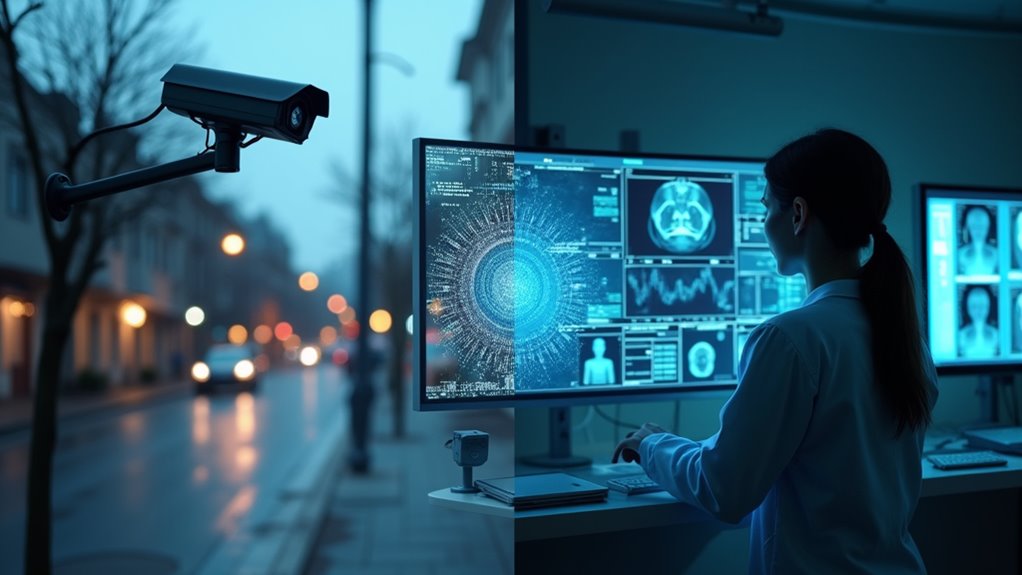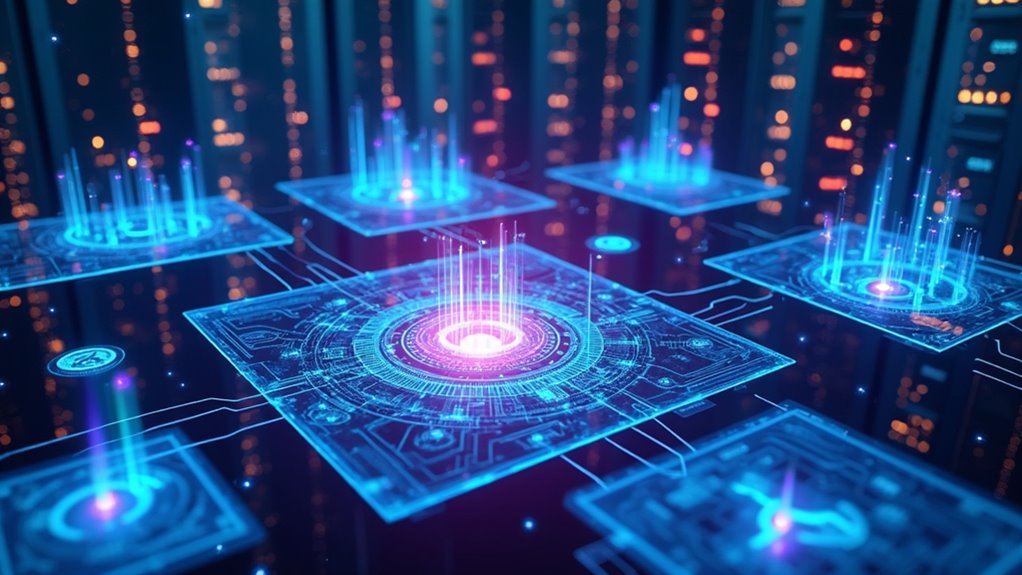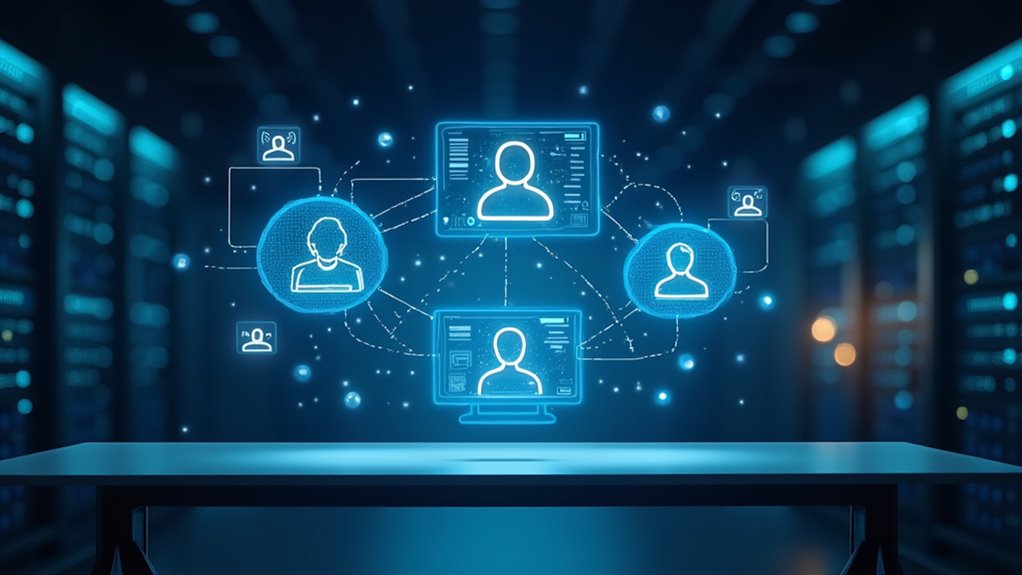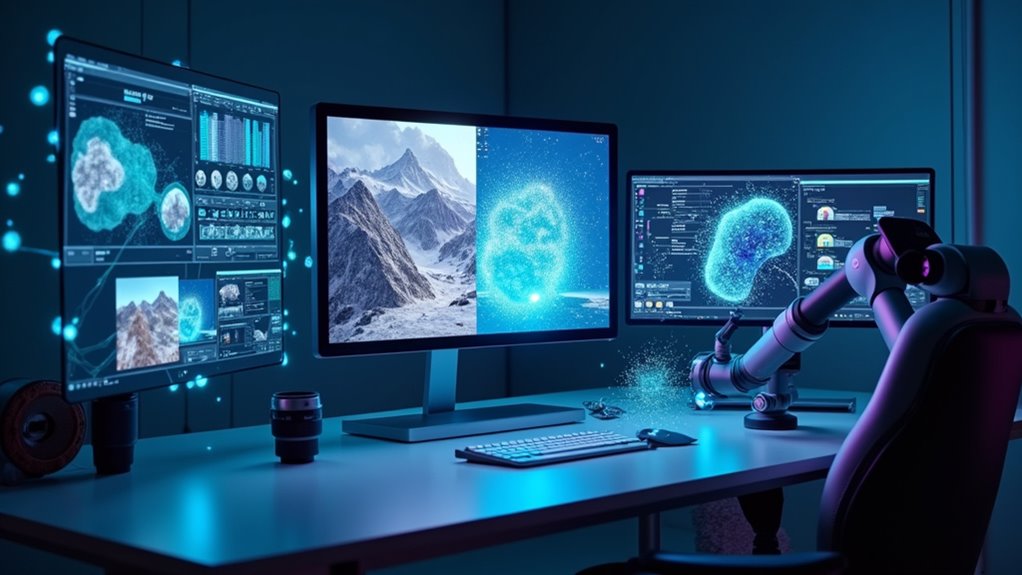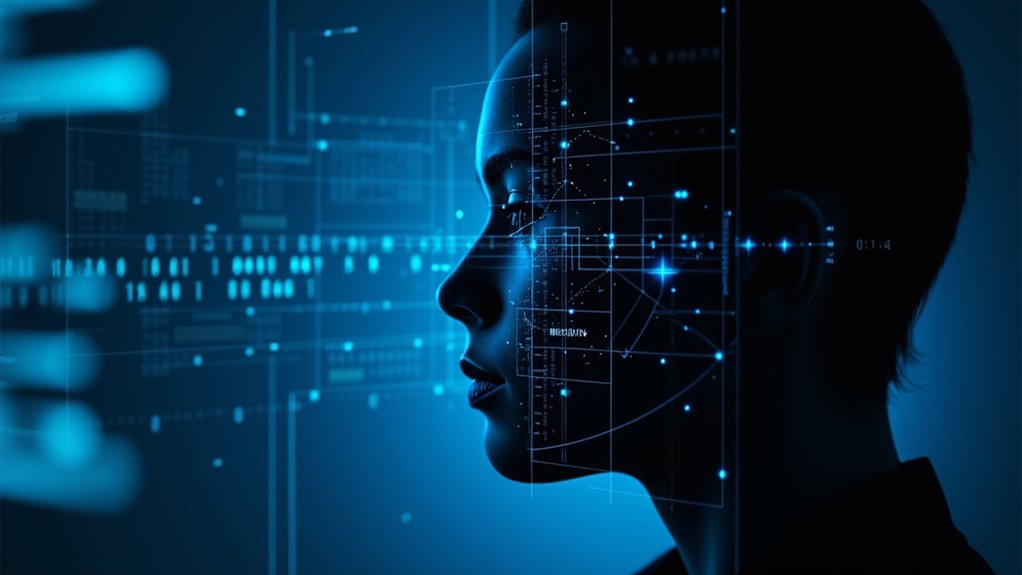AI dramatically reshapes human rights today through a double-edged sword of innovation and risk. It perpetuates societal biases in healthcare and education while enabling unprecedented government surveillance that targets marginalized communities. Your privacy? Shrinking fast. Yet AI also improves medical diagnostics and creates educational opportunities for underserved populations. The regulatory landscape struggles to keep pace, with frameworks like the EU’s AI Act offering limited protection. The challenge lies in harnessing benefits without surrendering fundamental freedoms.
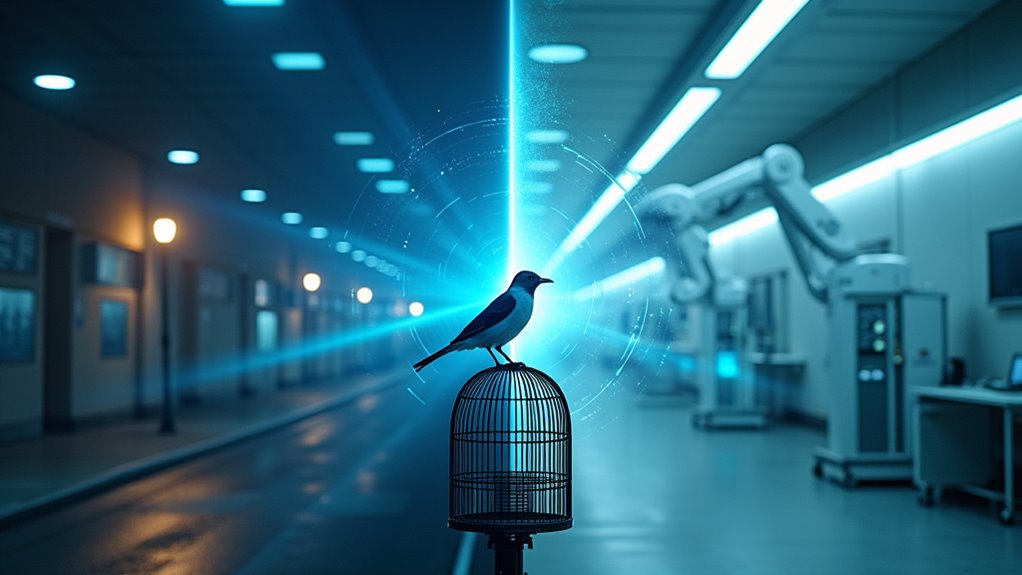
While artificial intelligence promises to revolutionize society, it simultaneously creates profound challenges for human rights around the globe. AI systems frequently perpetuate biases found in social systems, exacerbating discrimination against already marginalized groups in essential areas like healthcare and education. Remember those “unbiased” algorithms? They’re about as neutral as a Fox News host at a political rally. Discrimination mitigation requires vigilant oversight of these systems, not blind faith in their objectivity.
Meanwhile, surveillance ethics become increasingly urgent as governments deploy AI tools for mass monitoring, particularly targeting minority communities—eroding privacy rights faster than your smartphone battery dies. These technologies aren’t just watching us; they’re reshaping economic landscapes. AI-driven automation threatens to widen economic gaps by eliminating job opportunities, directly impacting economic rights and fundamental freedoms. Think your job is safe? Think again. The constant monitoring has created a chilling effect on how individuals express themselves and explore their identities in both private and public spaces.
The systems also limit freedom of movement through AI-assisted border control and can effectively suppress political dissent, making George Orwell’s nightmares look quaint by comparison. The aggregation of online information can result in blocked essential services for vulnerable populations. Yet AI isn’t exclusively a villain in the human rights story. The technology notably advances healthcare by improving diagnostic accuracy and treatment methods, potentially expanding access to quality medical services for underserved populations.
AI tools help track human rights abuses worldwide, though these efforts often face resistance through AI-enabled censorship. Educational opportunities expand through personalized learning systems—though without careful implementation, they risk deepening existing educational divides rather than bridging them. Data collection practices often lack transparent consent from individuals whose information forms the training foundation of these AI systems.
Regulating these powerful technologies presents formidable challenges. The complexity and rapid evolution of AI demand thorough legal frameworks that can adapt quickly. The European Union’s AI Act represents an important step forward, yet critics note it doesn’t fully protect vulnerable groups. Effective governance requires both national policies and international cooperation.
Want meaningful protection of your rights in the AI age? Demand transparency in AI decision-making systems. Because when machines make decisions affecting human lives, sunlight remains the best disinfectant—and right now, we’re mostly operating in the dark.
Frequently Asked Questions
Can AI Exacerbate Existing Societal Inequalities?
AI absolutely exacerbates societal inequalities. Data bias baked into algorithms doesn’t just reflect existing disparities—it amplifies them.
From workplace surveillance that monitors the poor while executives escape scrutiny, to algorithmic discrimination that denies opportunities to marginalized groups, AI systems are inequality accelerators.
Healthcare AI benefits those with resources while excluding others. Education tools widen achievement gaps.
The technology itself isn’t neutral; without intervention, AI simply automates inequality with ruthless efficiency.
Who Regulates Ai’s Impact on Human Rights Globally?
No single entity fully regulates AI’s impact on human rights globally. Instead, a patchwork of international governance attempts to fill the gap.
The EU leads with its AI Act, while the UN offers non-binding guidelines. The Council of Europe’s AI Treaty represents the first legally binding framework, but enforcement remains weak.
Private tech companies, ironically, often set their own ethical frameworks.
This regulatory vacuum? It’s exactly why AI continues to threaten human rights worldwide.
What Rights Are Most Vulnerable to AI Misuse?
The right to privacy faces severe threats from invasive AI surveillance, with privacy invasion occurring through unchecked data collection and facial recognition technologies.
Discriminatory algorithms disproportionately impact marginalized communities in criminal justice, lending, and healthcare.
Freedom of expression suffers when AI moderation misinterprets context, while the right to effective remedy is undermined by AI’s notorious “black box” problem.
Together, these vulnerabilities create a perfect storm of rights violations without adequate oversight or accountability mechanisms.
How Can Individuals Protect Their Rights Against AI Systems?
Individuals can protect their rights against AI systems by demanding algorithm transparency from companies using AI.
They should regularly check privacy settings, opt out of data collection when possible, and use privacy-enhancing tools like VPNs.
Data privacy isn’t optional anymore—it’s survival.
People should also support advocacy groups pushing for stronger regulations, file complaints when rights are violated, and educate themselves about how their data is used.
Knowledge is power, especially against invisible algorithms.
Are Marginalized Communities Disproportionately Affected by AI Technologies?
Yes, marginalized communities face disproportionate impacts from AI systems. Historical discrimination gets encoded into algorithms, creating a digital bias loop that’s hard to break.
Effective bias detection tools remain scarce, while community representation in AI development is abysmal. When systems are built without diverse perspectives, they predictably fail diverse users.
The tech industry’s “move fast and break things” approach breaks some communities more than others, reinforcing existing power structures rather than disrupting them.
